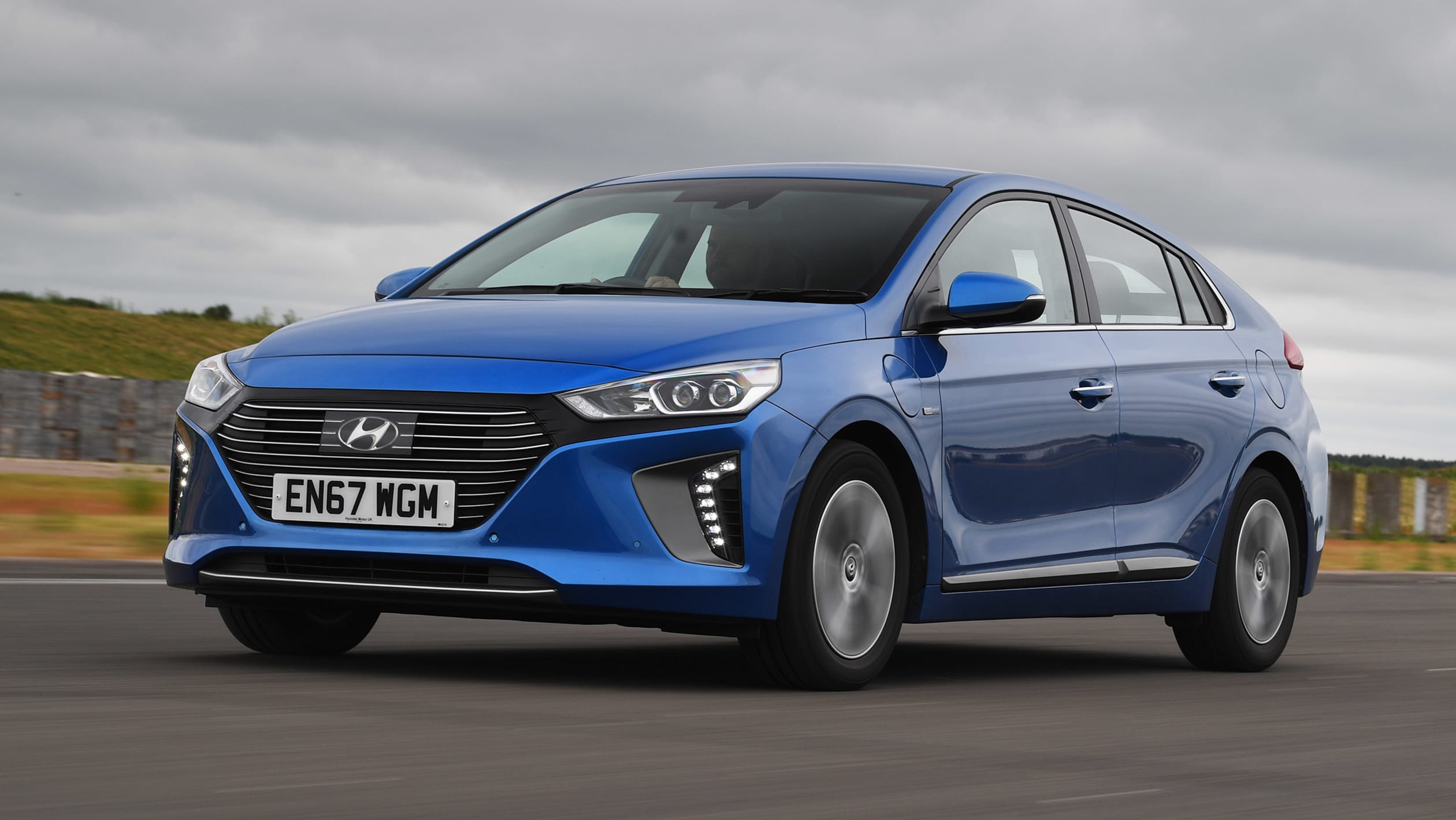The automotive landscape is undergoing a monumental shift, with electric vehicle (EV) sales surging by an impressive 60 percent in the US between 2022 and 2023. This rapid acceleration towards electrification has many drivers contemplating their next purchase, often weighing the benefits of all-electric models against their hybrid counterparts. The allure of cleaner driving and potential cost savings is strong, but the path to truly understanding which option delivers on its promises can be complex.
At its core, the choice between a hybrid and an electric car boils down to how the vehicle is powered. An electric vehicle operates solely on a battery and an electric motor, relying entirely on stored energy from charging equipment. Conversely, a hybrid car combines a gas-powered engine with an electric motor, utilizing separate batteries for each, and often recharging its electric component through the internal combustion engine or regenerative braking. Both aim to reduce fossil fuel consumption, but their approaches and the real-world implications differ significantly.
For consumers in the market for a new vehicle, the critical question often revolves around financial viability and practical everyday use. Which one offers the best value? Which one saves you more money over time? And which one integrates most seamlessly into your lifestyle without unexpected compromises? We’ve delved deep into the data, compared the technologies, and even leveraged real-world road trip experiences to bring you a comprehensive breakdown, revealing some surprising truths that could shape your next automotive decision.

1. **Initial Purchase Price Comparison**When you first step onto the dealership lot, one of the most immediate and impactful differences you’ll notice between hybrid and electric vehicles is the price tag. Generally speaking, hybrids tend to be significantly more affordable upfront than comparable all-electric models. This isn’t just a marginal difference; it can amount to thousands of dollars, making hybrids a more accessible entry point for many budget-conscious buyers looking to embrace more sustainable transportation.
Consider a specific example: the Kia Niro. The manufacturer’s suggested retail price (MSRP) for the Kia Niro (HEV) is $26,840, while its fully electric sibling, the Niro EV, fetches a price of $39,600. That’s a substantial difference of $12,760 for vehicles from the same family. This stark contrast in initial investment immediately highlights a key advantage for hybrids, offering a less expensive path to reduced emissions and improved fuel efficiency without the premium price associated with pure electric drivetrains.
For many consumers, this initial purchase price is a critical hurdle. While there are often government tax breaks or rebates available for electric vehicles, these can be complicated and ever-changing, and as the context notes, not all EVs qualify (for instance, the Kia Niro EV doesn’t qualify for the maximum federal tax credit because it’s built in South Korea). Therefore, the immediate financial outlay remains a strong point in favor of hybrids, allowing buyers to work within a more restrictive budget while still enjoying the benefits of electrified motoring.
Read more about: Unmasking the True Price: 14 Hidden Costs That Turn Car Ownership into a Financial Maze for Every Driver

2. **Fundamental Powering Mechanisms**Understanding the core differences in how these vehicles are powered is crucial to appreciating their distinct operational profiles. An all-electric vehicle, or EV, is a machine built entirely around an electric motor and a substantial battery array. These vehicles entirely forgo the traditional internal combustion engine (ICE) and its associated fuel system. Power for EVs is sourced exclusively by plugging the vehicle into external charging equipment, whether at home or at public charging stations, converting electricity into motion without any direct emissions from the tailpipe.
In contrast, a hybrid car represents a blend of technologies, incorporating both an electric motor and an internal combustion engine. The critical distinction for most hybrids (HEVs) is that their batteries cannot be plugged in to charge externally. Instead, the electric battery replenishes its power through two primary methods: by drawing energy from the internal combustion engine when it’s in use, and through a clever process called regenerative braking. As the car slows down or brakes, the electric generator captures that kinetic energy and converts it back into electricity to charge the battery.
This fundamental difference dictates everything from refueling habits to environmental impact. EVs offer a fully electric, zero-tailpipe-emission driving experience, albeit with the need for charging infrastructure. Hybrids, on the other hand, provide a versatile solution, utilizing electric power when efficient (like at low speeds) and seamlessly switching to or supplementing with gasoline power for longer distances or higher demands. There are also subcategories like parallel hybrids (two independent power systems) and series hybrids (gasoline engine powers a generator for the electric motor/battery), but the core idea of dual power sources remains consistent for HEVs.
Read more about: Beyond the Beijing Red Carpet: Unpacking the Complexities and Cracks in the Xi-Putin-Kim Show of Unity

3. **Average Monthly Payment Breakdown**Beyond the sticker price, the ongoing financial commitment of a vehicle is best reflected in its average monthly payment. This metric offers a practical insight into how a particular fuel type impacts your immediate household budget. According to data from the Experian State of the Automotive Finance Market Report, Q4 2021, there are noticeable differences in the average monthly payments across various vehicle types, providing a rough but telling idea of the cost.
Breaking down the numbers, the average monthly payment for an electric vehicle stands at $774. This is a significant figure that positions EVs at the higher end of the payment spectrum. In comparison, a gasoline-powered car averages $629 per month. However, it’s the hybrid vehicle that truly stands out in terms of affordability, with an average monthly payment of just $607. This makes hybrid cars the most economical choice on a month-to-month basis among the types listed.
This data underscores that while EVs might offer long-term fuel savings, their higher initial purchase price often translates into higher monthly financing costs. Hybrids, conversely, manage to combine the benefits of electrification with a remarkably lower financial burden, even beating out traditional gasoline cars in terms of average monthly payments. This makes hybrids an extremely attractive option for consumers prioritizing lower recurring expenses from the moment they drive off the lot.
Read more about: The Hidden Costs and Real Risks: Why Most Car Owners Find Extended Warranties a Poor Investment

4. **Emissions and Environmental Claims**One of the most compelling arguments for electric vehicles centers around their zero tailpipe emissions. Indeed, an EV produces no direct emissions from its exhaust, which is a significant appeal for environmentally conscious drivers. This direct benefit certainly contributes to cleaner local air quality, particularly in urban centers where vehicle emissions are a major concern. However, it’s crucial to look beyond the tailpipe to understand the full environmental footprint of an electric car.
The electricity used to charge an electric vehicle doesn’t magically appear; it often comes from power plants that burn fossil fuels. According to the U.S. Energy Information Administration (EIA), approximately 60% of electricity in the US is generated from fossil fuels such like coal, natural gas, petroleum, and other gases, with almost 20% specifically from coal plants. This means that while an EV itself doesn’t emit pollutants, its energy source often does, effectively shifting emissions from the car to the power plant. Furthermore, the manufacturing of EVs, particularly their large batteries, involves mining precious metals in third-world countries with potentially lax regulations, contributing to environmental destruction, pollution, and the fuel required for transportation of these materials.
Hybrids, while not entirely emission-free from the tailpipe, offer a different perspective. They produce roughly 35% to 40% of the emissions of traditional internal combustion engine vehicles on average, which is a substantial reduction. Moreover, because hybrid batteries are self-charging and do not require external plugging in, they don’t directly draw from the potentially “dirty” energy grid in the same way an EV does for its primary power. Their significantly smaller batteries also present much less of an environmental threat when eventually disposed of, using fewer precious metals in their construction. This nuanced view suggests that while EVs are often championed as the ultimate green solution, hybrids currently offer a more immediate and, in some respects, more holistically cleaner alternative, given today’s energy production realities.
Product on Amazon: Bill Payment Tracker. A5 Notebook Bill Planner with Spiral Binding and Back Pocket – Home Finance & Bill Payment Organizer, Logbook, Monthly Bill Organizer Notebook
Brand: Maison Miru
Binding: Spiral-bound Product Group: Office Product
Price: 7.98 USD
Rating: 4.6 Total reviews: 807
Color: Gold, Blue
Cover Material: Paper
Year: 2021
Format: Notebook
Calendar Type: Monthly
Target Audience: Adult
Sheet Size: A5
Material: Vinyl
Item Weight: 0.23 Kilograms
Features:
1. EFFICIENTLY TRACK ALL YOUR BILLS – Never lose sight of your paid and upcoming bills. Our spiral monthly bill planner makes it so much fun and easier to track subscriptions, invoices, and more.
2. SUPERIOR PAPER QUALITY – Enjoy a premium experience with every log you make in our bill tracker. The high-quality 100 gsm thick paper prevents ink bleed and ghosting. Your records won’t fade or smudge over time.
3. BILL PLANNER KEY FEATURES – Specially designed ledger notebook with assigned space for everything you need to remember: bill description, due date, amount due, paid date, balance & paid checker. Plus, a total monthly balance and Notes space.
4. STURDY SPIRAL BINDING & BACK POCKET – Safely keeping all your bill records together with a double wire spiral binding. Plus, our bill payment notebook has a convenient back pocket to hold your receipts.
5. FLEXIBLE & WATERPROOF COVER – Benefit from your bills notebook for years to come. As extra protection, we used a flexible and highly resistant PEE Cover with a unique and stylish design.
Shopping on Amazon >>
Read more about: From Dream to Disaster: The Unforgettable Rides That Stole Our Hearts, and the Automotive Letdowns That Left Us Stranded

5. **Range and the Reality of Travel**For many drivers, especially those considering longer trips, the distance a vehicle can travel on a single charge or tank is a paramount concern. Electric vehicles have made significant strides in range, with the average estimated range now approaching 300 miles. High-end models like the Lucid Air can boast an impressive estimated range of 520 miles, and many popular models now average around 300 to 350 miles before needing a recharge. On paper, these figures can seem competitive with many gasoline cars.
However, real-world conditions often tell a different story. A recent study by SAE International revealed that actual electric car mileage can be 12.5% worse than EPA estimates. Factors such as hilly terrain, extremely cold or hot temperatures, and even the use of air conditioning or heating can significantly siphon off an EV’s range. For instance, extreme cold can drain over 30% of an EV’s range, simultaneously increasing charging times. This variability can introduce what’s widely known as “range anxiety”—the worry about getting stranded without a nearby charging station, especially on unfamiliar or remote routes.
This is where hybrids hold a distinct advantage. With a hybrid, range anxiety is virtually non-existent because they are self-charging via regenerative braking and have a gasoline engine to fall back on. You don’t need to meticulously plan routes around charging stations; when the electric charge runs low, the gas engine takes over, and refueling is as simple as pulling into any gas station. Many long-range plug-in hybrids can go considerably further than typical EVs, with some topping 500 miles on average, and models like the Mercedes Benz S580e averaging an astonishing 688 miles. Even standard hybrids offer excellent fuel economy, with the Kia Niro hybrid delivering an estimated 49 mpg (city/highway), the Toyota Prius getting 57 mpg, and the Hyundai Elantra Hybrid achieving 50 mpg, ensuring hundreds of miles of travel before a pit stop. CNET’s own 10,000-mile road trip observed that while a Tesla Model 3 Long Range approached the range of some gas cars, a Hyundai Ioniq hybrid managed an impressive 50.5 mpg and a 595-mile range, showcasing its superior travel capabilities.
Car Model Information: 2022 Lucid Air Grand Touring
Name: Lucid Air
Caption: 2022 Lucid Air Grand Touring in Zenith Red
Manufacturer: Lucid Motors
Production: September 2021 – present
ModelYears: 2022–present
Assembly: Casa Grande, Arizona
Designer: Derek Jenkins
Class: Executive car
BodyStyle: Sedan (automobile)
Layout: unbulleted list
Related: Lucid Gravity
Transmission: One-speed fixed gear
Powerout: cvt
Battery: kWh,Lithium-ion battery
ElectricRange: cvt
Charging: unbulleted list
Wheelbase: 2960 mm
Order: flip
Abbr: on
Length: 4975 mm
Width: 1939 mm
Height: 1410 mm
Weight: convert
Sp: us
Categories: All-wheel-drive vehicles, All Wikipedia articles written in American English, All articles containing potentially dated statements, All articles with unsourced statements, Articles containing potentially dated statements from 2021
Summary: The Lucid Air is a battery electric four-door luxury sedan made by Lucid Motors. The car was announced in December 2016 and sold starting in 2021.
The Dream Edition’s EPA range is estimated at 520 miles (840 km), the longest on the market as of 2024. The production model was unveiled in September 2020, and production began in late 2021.
In November 2020, the Lucid Air Pure was announced with 406 miles (653 km) of projected range and 480 horsepower (360 kW) and a starting price of US$77,400. The range of trim levels includes Pure, Touring, Grand Touring, and Dream Edition.
On September 28, 2021, Lucid Motors announced that production had begun, with the base Pure model expected in late 2022. Deliveries commenced on October 30, 2021, with the first reservation holders taking delivery of Air Dream Editions in an event in California.
Get more information about: Lucid Air
Buying a high-performing used car >>>
Brand: Lucid Model: Air
Price: $53,990 Mileage: 47,845 mi.
Read more about: How to Safely Stop Tailgaters: 12 Expert Brake-Free Hacks for American Drivers

6. **Charging vs. Refueling Convenience and Time**The act of “fueling up” a vehicle is a daily reality for drivers, and the difference between charging an EV and refueling a hybrid (or gasoline car) is substantial. While finding a charging station isn’t inherently “hard,” as CNET’s road trip drivers experienced, it certainly requires more effort and planning than locating a ubiquitous gas station. EV owners typically need dedicated apps like ChargePoint or PlugShare to find available stations, a step completely absent from the traditional refueling process.
The time commitment is arguably the most significant differentiator. While a gas car can be refueled in about five minutes (or ten if you’re also grabbing snacks), electric vehicle charging times vary wildly. Tesla’s Supercharger system, praised for its efficiency, can add 15% charge in approximately 12-13 minutes, or 76% in 47 minutes. However, other charging solutions can be dramatically slower: a CCS charger encountered in Pasco, WA, delivered just 15% charge in two hours, and a Chargepoint charger in Seattle managed only 7% in an hour and 18 minutes. For situations where fast chargers are unavailable, plugging in overnight at a hotel can provide significant charge (e.g., 70% in about 10 hours with a 32-amp CCS charger), but this is far from the quick stop of a gas station.
This disparity means that even with the most advanced EV infrastructure, charging requires a more considerable time investment compared to conventional refueling. The sheer density and visibility of gas stations still far outstrip public EV charging points, meaning drivers of hybrids benefit from the convenience of familiar, fast, and readily available refueling options, eliminating the need to search for a compatible charger or factor in potentially lengthy charging stops during a journey. This practical advantage significantly streamlines travel for hybrid owners.
Product on Amazon: Professor Maxwell’s VR Atlas – Virtual Reality Kids Science Kit, Book and Interactive Geography STEM Learning World Travel Activity Set (New Edition)
Brand: Abacus Brands
Binding: Toy Product Group: Toy
Price: 49.99 USD
Rating: 4.4 Total reviews: 114
Shopping on Amazon >>
Read more about: More EV Owners Are Switching Back to Gas: A Verge Analysis of Why the Electric Dream Isn’t Always Sticking

7. **Performance and Driving Experience**Both electric vehicles and hybrids offer a distinct driving experience that often surpasses traditional gasoline-powered cars, but they achieve this through different means. Electric vehicles are renowned for their impressive acceleration, primarily due to instant torque. Unlike internal combustion engines, electric motors deliver maximum torque immediately from a standstill, resulting in quick, exhilarating launches. This, combined with their inherent quietness and smooth power delivery, creates a refined and comfortable ride, often described as more effortless than a conventional vehicle.
Hybrid cars, on the other hand, benefit immensely from their versatility in performance. At lower speeds, the electric motor typically powers the vehicle, providing silent, efficient propulsion perfect for city driving or stop-and-go traffic. As speeds increase, or when more power is demanded, the gasoline engine seamlessly takes over or works in conjunction with the electric motor. Some hybrids even feature an ‘EV switch’ allowing drivers to force the car to operate on electricity only for short distances, maximizing fuel efficiency in specific scenarios. This adaptability gives hybrids a ‘best of both worlds’ feel, leveraging electric power when most efficient and gasoline power for sustained speed or longer range.
Another significant aspect of performance is all-wheel drive (AWD). While some electric models are now available with AWD, making them a safer choice in inclement weather like rain, snow, and ice, this feature is still more commonly found in hybrid cars, often offered as standard or optional equipment. For drivers in regions prone to frequent winter storms, the greater availability of AWD in hybrids can be an important consideration for peace of mind and enhanced traction. While the added weight of AWD might slightly impact fuel economy in a hybrid, the safety and confidence it provides can often outweigh this small trade-off, highlighting the practical advantages of hybrid designs in diverse driving conditions.
Navigating the complexities of hybrid and electric vehicle ownership requires looking beyond the showroom floor. The real story of which vehicle truly saves you money, and which better suits a sustainable future, unfolds over years of ownership. As we delve deeper, we’ll examine the long-term financial commitments, the evolving infrastructure, and the broader societal impacts that shape the hybrid vs. electric car debate, revealing critical factors often overlooked in initial comparisons.
Product on Amazon: The Lost Art of High-Performance Driving: How to Get the Most Out of Your Modern Performance Car (Speed Secrets)
Binding: Kindle Edition Product Group: Digital Ebook Purchas
Price: 4.99 USD
Rating: 4.5 Total reviews: 222
Shopping on Amazon >>
Read more about: You Won’t Believe How These 12 Supporting Characters Stole The ENTIRE Movie!

8. **Insurance Costs: A Heavier Premium for EVs and Hybrids**When considering the full cost of vehicle ownership, insurance premiums are an unavoidable and significant factor. Electric cars, due to their higher purchase price compared to gas-powered vehicles, typically come with higher insurance premiums. Furthermore, their high-tech components mean that repair costs following a collision are often more expensive, directly contributing to these elevated rates.
Hybrid vehicles also tend to cost more to insure than traditional gasoline cars, and in some cases, their premiums can be on par with, or even exceed, those for electric vehicles. This again stems from their higher-than-average price tag and the increased repair costs associated with their complex hybrid powertrains. Another contributing factor to higher insurance costs for hybrids is that many owners drive long distances regularly, which statistically can increase risk.
For electric vehicle owners, there might also be additional considerations such as covering specialized EV charging equipment. The advanced engineering and specialized parts in both hybrids and EVs mean that any damage sustained in an accident can lead to more expensive and specialized repairs, reinforcing why insurance providers often levy higher premiums for these types of vehicles. It’s a critical long-term expense that shouldn’t be underestimated.

9. **Battery Longevity and Replacement: The Long-Term Heart of the Car**The battery is the single most expensive component in an electric car, making its longevity and eventual replacement a crucial long-term consideration. The good news for EV owners is that many batteries are designed to last a substantial period, often between 10 and 20 years. The actual lifespan can vary based on the specific model, manufacturer, and, importantly, how the owner treats their vehicle.
For instance, manufacturers like Nissan and Tesla typically offer robust battery warranties, often covering 8 years or 100,000 miles, providing a degree of peace of mind. A significant factor influencing battery degradation is charging habits. While charging at home is convenient, using rapid commercial chargers more frequently can accelerate battery degradation compared to the slower, gentler charging methods often employed overnight.
Hybrid cars present a different battery replacement dynamic. Their smaller batteries, which are self-charging and don’t require external plug-ins, generally need replacement around 150,000 miles. For many drivers, this translates to roughly every 15 years. While still an eventual expense, the cost and frequency differ from the larger, more complex battery arrays found in all-electric vehicles, highlighting distinct long-term maintenance profiles for each.
Read more about: Driving the Distance: A Deep Dive into Electric Vehicle Lifespan, Reliability, and Future-Proofing for 200,000 Miles and Beyond

10. **Depreciation: A Hidden Cost for Electric Vehicles**Depreciation, or the loss of a vehicle’s value over time, is a critical long-term financial factor that significantly impacts the true cost of ownership, especially when it comes time to sell or trade in. In this regard, electric vehicles currently face a notable disadvantage compared to their hybrid counterparts. The five-year depreciation rate for electric vehicles stands at nearly 50 percent.
This substantial depreciation rate is quite high, with only very high-end, luxury gas-powered vehicles, which were exceptionally expensive to purchase, exhibiting a greater loss of value. While the depreciation rate for EVs has seen an 18 percent improvement since 2019, and may continue to improve as the market matures, it remains a significant financial hit that potential owners should be aware of. The full weight of this cost will be felt when the vehicle is eventually resold.
Hybrids, in contrast, fare much better in terms of retaining their value. Their five-year depreciation rate is recorded at 37.4 percent. This figure is actually better than the average 38 percent depreciation rate across all types of vehicles. In fact, among the various vehicle categories, only pickup trucks exhibit a lower depreciation rate than hybrid cars, underscoring their relative stability as an investment.
For consumers determined to purchase an electric car, a practical strategy to mitigate this steep depreciation is to consider buying a model that is two or three years old. This approach allows someone else to absorb the initial, most significant drop in value, potentially making EV ownership more financially palatable in the long run.
Read more about: Unmasking the True Price: 14 Hidden Costs That Turn Car Ownership into a Financial Maze for Every Driver

11. **Maintenance Schedules: Less for EVs, More for Hybrids**Vehicle maintenance is an inherent part of car ownership, but the type of powertrain significantly dictates the frequency and cost of these necessary services. One of the clearest long-term financial advantages for electric vehicles is their significantly lower maintenance requirements compared to both gasoline and hybrid models. This often translates into substantial savings over the vehicle’s lifespan.
According to AAA, electric vehicles, when maintained according to manufacturer recommendations, incur an annual cost of $949. This is a notable $330 less than the annual maintenance cost for a comparable gas-powered car. The reason for this reduction is straightforward: EVs do not require routine services such as oil changes, spark plug replacements, or air filter changes, which are standard for internal combustion engines.
Hybrid cars, while incorporating an electric motor, still house a gasoline engine. Consequently, they necessitate many of the same maintenance procedures as traditional gas cars. This includes regular oil changes, air filter replacements, and other engine-related upkeep. While the electric motor component helps to reduce the workload on the gasoline engine, it doesn’t eliminate these essential service intervals.
Therefore, when evaluating long-term costs, electric vehicles present a clear benefit in terms of reduced maintenance hassle and expense. Hybrid vehicles, while more fuel-efficient, still maintain a more traditional maintenance schedule and associated costs due to their dual-propulsion system.

12. **Broader Ecological Footprints: Beyond the Tailpipe**While the immediate appeal of electric vehicles often rests on their zero tailpipe emissions, understanding their full ecological footprint requires a more comprehensive view that extends beyond the exhaust pipe. The environmental impact of an EV begins long before it hits the road, primarily during its manufacturing process, particularly the production of its large battery.
The creation of lithium-ion batteries, which power EVs, relies on several precious metals. These materials are frequently sourced through mining operations in third-world countries, where environmental regulations and oversight may be less stringent. This can lead to significant environmental destruction, localized pollution, and a substantial carbon footprint associated with the extraction, processing, and global transportation of these raw materials.
Moreover, the “cleanliness” of an electric vehicle’s operation is directly tied to its energy source. Data from the U.S. Energy Information Administration (EIA) reveals that approximately 60% of electricity generated in the US still comes from fossil fuels, with nearly 20% specifically from coal plants. This means that while an EV produces no direct emissions, its charging effectively shifts emissions from the vehicle to the power plant, creating an indirect, but still present, environmental impact.
Hybrids, despite having tailpipe emissions, offer a different environmental calculus. They typically produce only 35% to 40% of the emissions of traditional internal combustion engine vehicles. Crucially, their significantly smaller batteries require far fewer precious metals—with one EV battery equivalent to the materials for 17 hybrid batteries, according to Green Car Reports. Furthermore, since hybrids self-charge and don’t plug into the grid for their primary power, they avoid directly drawing from potentially “dirty” energy sources in the same way an EV does, presenting a more immediate and, in some respects, holistically cleaner option given current energy infrastructure realities.

13. **Infrastructure Demands and Government Incentives: A Developing Landscape**The rapid increase in electric vehicle adoption brings with it significant challenges and demands on existing infrastructure. As more EVs hit the road, the electricity grid faces increasing strain. We’ve seen examples, such as in California, where power outage threats and actual outages have been linked to an already overwhelmed power grid struggling to meet rising demand, especially during peak times.
Consider California’s ambitious mandate requiring all new cars sold to be zero-emission vehicles by 2035. With roughly a million electric cars already registered in the state, and this number set to dramatically increase, there are serious questions about how the power infrastructure will cope with such a massive influx of charging demand. The context indicates a current lack of a concrete plan to address these looming infrastructure shortfalls, suggesting a potential bottleneck in the widespread EV transition.
Government incentives, such as federal tax breaks or rebates, are designed to encourage EV purchases. However, these programs are often complex, subject to change, and not all electric vehicles qualify, as exemplified by the Kia Niro EV which doesn’t receive the maximum federal credit due to its manufacturing location. This variability can make it difficult for consumers to rely on these incentives for long-term financial planning.
The context also suggests an alternative approach: if governments were to prioritize and subsidize hybrids, it could lead to a faster and more widespread reduction in fossil fuel consumption and greenhouse gas emissions across the U.S. vehicle fleet. This strategy could achieve a national average of 50 mpg or better within years, rather than decades, buying crucial time for power grids to modernize and for EV charging technology to mature, all while offering a more affordable and less infrastructure-intensive solution for consumers in the short term.

14. **Hybrid vs. Electric: Making Your Informed Decision**We’ve delved deep into the nuances of hybrid and electric vehicles, dissecting everything from initial purchase prices and monthly payments to long-term costs like insurance, maintenance, depreciation, and their broader environmental footprints. The choice between these two advanced vehicle types is rarely simple and profoundly personal, hinging on a delicate balance of cost, convenience, and conscientious impact.
For many, the allure of zero tailpipe emissions and a futuristic driving experience makes electric vehicles incredibly appealing. EVs shine with impressive acceleration, quiet rides, and significantly lower maintenance costs, eliminating the need for oil changes and many traditional engine services. However, they typically come with a higher upfront price tag, face notable depreciation rates, incur higher insurance premiums, and necessitate careful planning around charging infrastructure and times, especially for longer journeys.
Hybrids, on the other hand, consistently emerge as a pragmatic and financially accessible solution for today’s drivers. They offer a substantial reduction in emissions compared to traditional gasoline cars and provide excellent fuel efficiency, often achieving 50 mpg or more. Crucially, hybrids eliminate range anxiety and boast lower initial costs and better depreciation rates, making them a more stable asset over time. They are often described as bridging the gap, easing consumers into electrification without the immediate compromises or infrastructure demands of a full EV.
The data clearly indicates that, in many long-term financial metrics, hybrids hold a distinct advantage. As the Kelley Blue Book 5-Year Cost-to-Own projections illustrated with the Kia Niro Hybrid having a significantly lower total ownership cost than its EV counterpart, this is a critical factor for budget-conscious consumers operating within real-world financial constraints. Given today’s realities of power grids and resource sourcing, hybrids offer a more immediate and, in some respects, more holistically cleaner alternative.
Ultimately, your decision should align with your specific driving habits, budget, and access to charging or refueling infrastructure. If you’re a long-distance driver, prioritize immediate savings, want to avoid range anxiety, and seek a robust environmental benefit without the high upfront financial burden, a hybrid is likely the smarter, more practical choice today. If you have the financial flexibility, a home charging solution, and primarily commute, an EV could be a viable option, but be fully aware of its specific long-term costs and infrastructure dependencies.
The automotive market is evolving at an incredible pace, and both hybrid and electric vehicles represent significant steps forward in sustainable transportation. By understanding the detailed breakdown of their immediate and long-term financial, practical, and environmental implications, you are now equipped to make an informed decision that truly aligns with your needs and values. Whether you prioritize upfront savings, long-term cost efficiency, environmental impact, or daily driving convenience, there’s a vehicle out there that’s right for you. Your next car purchase isn’t just about getting from point A to B; it’s about making a smart investment for your wallet and the planet.



